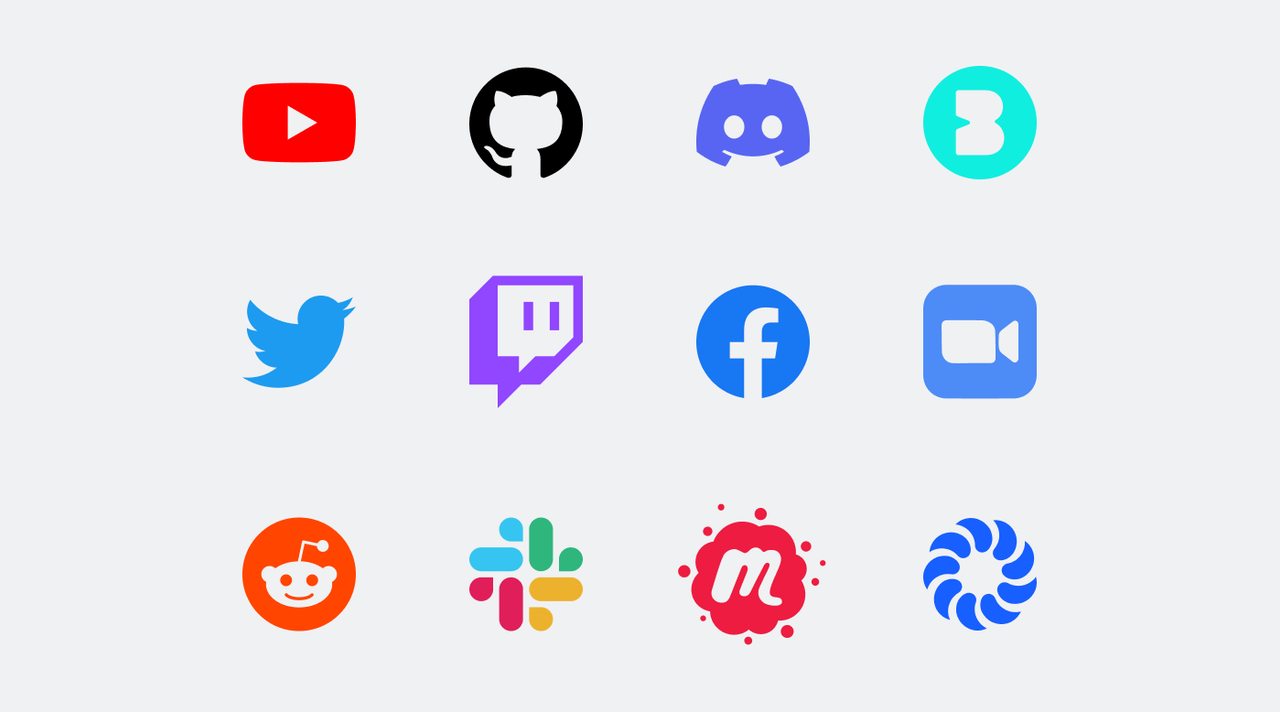As alluded to in our blog post detailing why we opened Slack as our first owned community channel, we want to dive deeper into our decision-making process. There are a lot of channels out there offering different ways your community can interact with your brand—Slack, Discord, Discourse, Twitter, LinkedIn, and even bespoke solutions. Unfortunately there is no one-channel-to-rule-them-all, so you must assess the tradeoffs between different community channels to make your selection. In this post we’ll share our framework for evaluating channels and help you choose the one that’s best for your needs.
📊 Evaluate Channels
Your members volunteer their time and effort when participating in your community. So, it’s incredibly important to be thoughtful and intentional about the channel you’ll open. This also means thinking about not only what you need to achieve in the short-term, but keeping an eye towards your long-term goals too, and not sacrificing one at the expense of the other.
To help keep track of all these factors, we recommend evaluating community channels based on two key questions:
1. What community objective does it achieve?
- Foster relationships between members
- Enable one-to-many communications
- Build a content library / support resource
2. What kind of engagement dynamics does it enable?
- Identity: Visibility vs. anonymity
- Messaging: Synchronous vs. asynchronous
By taking into consideration both your community objective and the types of engagement behavior you want, the channel you select will serve you well not only today, but in the future as well.
🎯 Define Your Objectives
Before opening any kind of community channel, you’re probably asking yourself, “What am I opening this channel for?” Based on our experience and that of our customers, we typically see three common answers to this question: 1/ foster relationships between members, 2/ enable one-to-many communications, or 3/ build a content library / support resource. There is no one-size-fits-all approach—different channels are best suited to achieve different objectives.
Foster relationships between members
You’re looking for a space for your members to connect with one another through common interests, knowledge sharing, and a celebration of others’ work, contributions, and achievements. You want to facilitate conversations and to give members a more casual, ephemeral way to connect everyday. If this checks the box, you should consider a chat platform like Slack and Discord.
Enable one-to-many communications
You want to broadcast in a one-to-many fashion to ensure your voice has the broadest reach possible. You also want the ability to amplify others’ messages and content that aligns with your company values or mission. Consider social networking platforms such as Twitter, LinkedIn, and Facebook to achieve this kind of communication.
Build a content library / support resource
You want a space to help troubleshoot customer problems and resolve support tickets. Instead of a feed to scroll through, you want to offer technical resources and how-to guides in a searchable database that can also be permalinked. For these needs, you’re going to want to look at forums-types platforms like Discourse, GitHub Discussions, and inSided.
🎛️ Select Your Engagement Dynamics
An additional consideration to layer onto your channel decision is what we broadly call engagement dynamics, or how members will (or are expected to) interact with each other within the community. These usually manifest themselves in two forms: 1/ identity (visibility vs. anonymity) and 2/ messaging approach (synchronous vs. asynchronous). Think of each of these as a spectrum rather than a binary response (e.g., chat platforms lend themselves to both synchronous, real-time conversations as well as asynchronous threads).
Identity: visibility vs. anonymity
The mechanics of some channels, including LinkedIn, Facebook, and Slack, are such that the information in your profile is quite public. This helps enable everyone to get a sense of who they're engaging with. Others, such as Discord, Reddit, and YouTube, allow for and often have anonymous usernames, typically in honor of data privacy. Where you fall on this spectrum will dictate the short list of channels you can choose from. (FWIW, we at Uncommon believe visibility is paramount and that communities are stronger when its members know who each other are.)
Messaging: synchronous vs. asynchronous
Different channels use different messaging approaches. Synchronous messaging enables live conversations with a defined beginning and end (think Intercom and Slack conversations). Asynchronous messaging, on the other hand, lends itself to more open-ended conversations and does not require all parties to be present and interacting at the same time (think LinkedIn, Twitter, and Reddit). Depending on what kind of messaging you want will impact which channel is best for your needs.
⚖️ Assess Your Tradeoffs
We’ve created the below visualization to help you assess the tradeoffs between community channels based on the engagement dynamics discussed in this post.

As an example, we chose Slack because we wanted a channel that fostered relationships primarily through real-time conversations and that allowed for a public profile. If you’re looking to rally your community first and foremost around sharing resources and troubleshooting issues in a more asynchronous fashion, with less of an emphasis on their public identity, we’d recommend channels such as Discourse or GitHub Discussions.
Hopefully this post has made it a little easier for you to decide on which community channel to open. Feel free to at-mention us on Twitter to let us know which channel you chose. We also encourage you to join Uncommon to get updates about what's happening across the community space, including open job roles, interviews with experts, and a breezy monthly newsletter.
